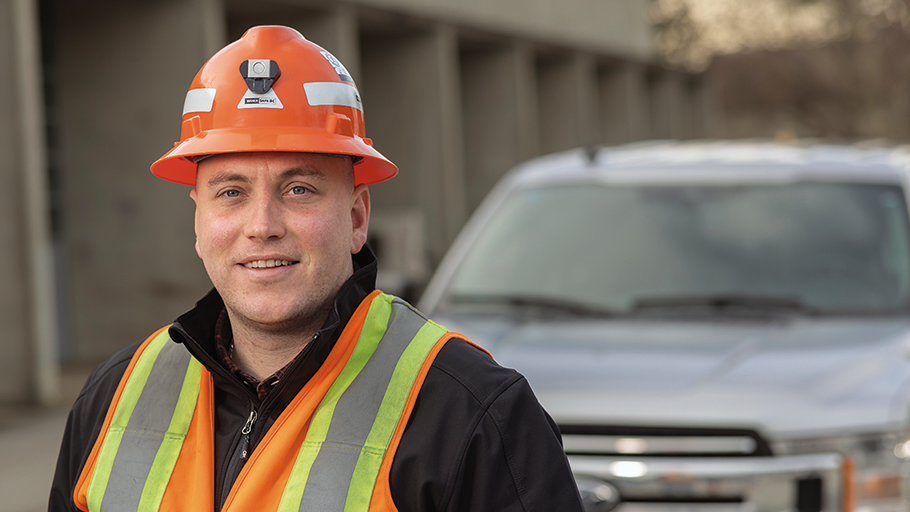Ask an officer: Is a ladder the right tool for the job?
As we move into warmer weather and construction sites step up their operations, it’s a good time to think about ladder safety. Since ladders are popular and easy to use it can be easy to forget about the risks. Falls from ladders continue to be a leading cause of injury to workers in the construction industry. We speak to WorkSafeBC occupational safety officer Russell Thompson about performing a risk assessment and other ways to stay safe while working from ladders.
Russell Thompson
Occupational safety officer, Port Moody
Years on the job: 5
What do I need to do before considering a ladder?
The first thing to consider is whether a ladder is the right tool for the job. To help determine this, complete a risk assessment for every job that involves working from height. The Risk assessment checklist for ladder safety is a great resource to help you determine if a ladder is right for the job.
What are some hazards with ladder use?
Workers can be seriously injured if they fall from a ladder. Falls while working on a ladder can happen in situations where it is unsafe to use the ladder, for example, when a worker is unable to maintain three points of contact. In situations where it’s unsafe to use a ladder, a work platform must be used instead. A fall from a ladder can also occur when the wrong type of ladder is selected or when it’s not set up properly.
Workers can also get hurt while performing tasks from ladders — for example, while carrying tools and materials up and down, overreaching while on the ladder, using excessive force, or slipping and falling.
What are some safe work procedures while working from ladders?
Before using a ladder, inspect for bent rails and damaged rungs, and ensure all connection points are secure. Check the manufacturer’s instructions for use. While working from a ladder, maintain three points of contact when going up and down and, if possible, during the completion of the task. Ladders should only be used for short-duration, light-duty tasks — usually less than 15 minutes.
Employers and supervisors must ensure workers are trained in safe ladder use and set up, and that effective supervision is in place for the duration of the work.
How do I select the right type of ladder?
If a ladder is the right tool for your work task, select the type with an appropriate weight rating, height, and material for the work. The results of your risk assessment should help determine the type of ladder to use.
What are some alternatives to ladders?
Employers should eliminate work at elevation, if possible, by having workers do the work at ground level. If work needs to be done at elevation, consider work platforms such as scissor lifts, self-propelled boom-supported lifts, scaffolding, or platform ladders as alternative solutions. Keep in mind that if it is unsafe for a worker to use a ladder for a specific task, the employer must provide a work platform.
Where can I get more information?
Find out more about choosing, setting up, and working safely from ladders, or view helpful resources on assessing risk.
Workers and employers can also call our Prevention Information Line at 604.276.3100 in the Lower Mainland, or toll-free at 1.888.621.7233 for assistance with health and safety issues in the workplace.
Is there a specific health and safety question you would like our officers to address in a future “Ask an officer”? Send it to us at worksafemagazine@worksafebc.com, and we’ll consider your topic request.
This information originally appeared in the Spring 2023 issue of WorkSafe Magazine. To read more or to subscribe, visit WorkSafe Magazine.

